Pure Speed: Time trialling on Rene Herse tires
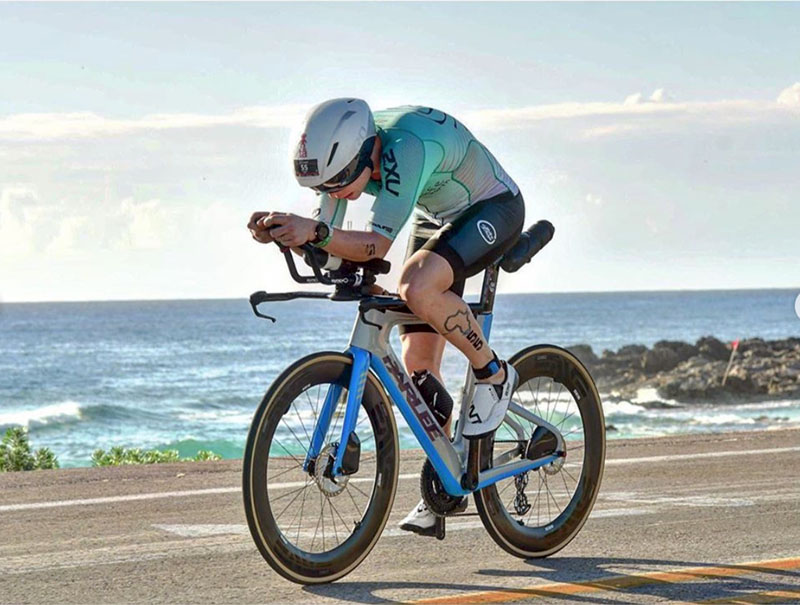
With all the emphasis on gravel and less-than-smooth backroads, it’s easy to forget the joys of pure speed as you glide over smooth pavement. And perhaps nothing is more about speed than triathlons. Few people know that both BQ team rider Mark and I did triathlons way back in the early 1990s…
So when we learned that Quentin Kurc-Boucau placed 14th in the Cozumel Ironman in Mexico on Rene Herse Chinook Pass tires, we were curious to find out more about his tire choice and his experiences. Earlier this week, I caught up with Quentin (QKB) and chatted about his sport.
JH: Congratulations on your excellent performance in Mexico. There was quite some competition at the start! Tell us a bit about your race!
QKB: When I saw the start list, with so many big names, I thought that a top-20 placing would be very good. Most of these guys have been doing nothing but triathlons for 10 years; they’ve never had a real job. For me, it was the end of the year, and I’d raced a lot, plus our baby was born a few months earlier, so I was a bit tired. But the race went better than I thought.
I left the water in the first group, 3 minutes behind the fastest riders. On the bike, I rode the 180 km in 4:22 hours, which was the 10th fastest time. I tried to economize a bit on the bike, because I knew the run would be very hot. My marathon time was 3:15, and yes, it was hot!
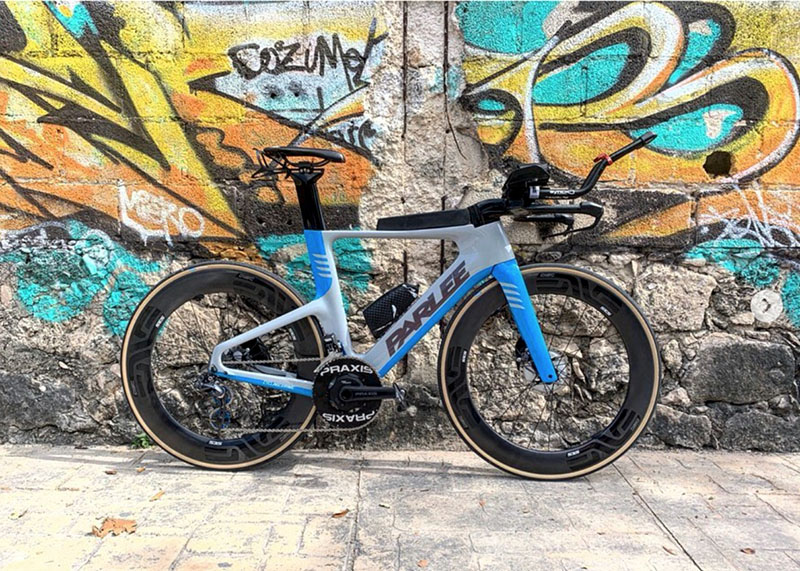
JH: So you averaged a bit more than 41.2 km/h (25.6 mph) during the bike leg – after swimming 2.4 miles and before running a marathon! When I competed in triathlons in the 1990s, we put clip-on aerobars on our racing bikes, and that was it. Today’s bikes are much more sophisticated. Tell us about yours!
QKB: Triathlon is a very technological sport. All the equipment is perfected to the nth degree. You can gain a few Watts here and there. I love bikes, so I’m always thinking about my equipment. I have a background in science, so I’m always testing and measuring, in the wind tunnel, on the track with different equipment, different positions, different tires and pressures…
I chose my sponsors based on the equipment, but also based on the human relationships. I like working with small companies where people appreciate my feedback, and we have a real relationship. I ride a Parlee, a brand that is almost unknown in France. I get a good deal on my bikes, but other companies have offered me free bikes. I prefer to ride what I really like than just to get sponsored.
Regarding my tire choice, I’ve tested many different tires, and I found that I’m fastest on supple 28 mm tires at relatively low pressure – less than 6 bar (85 psi). The difference is quite remarkable.
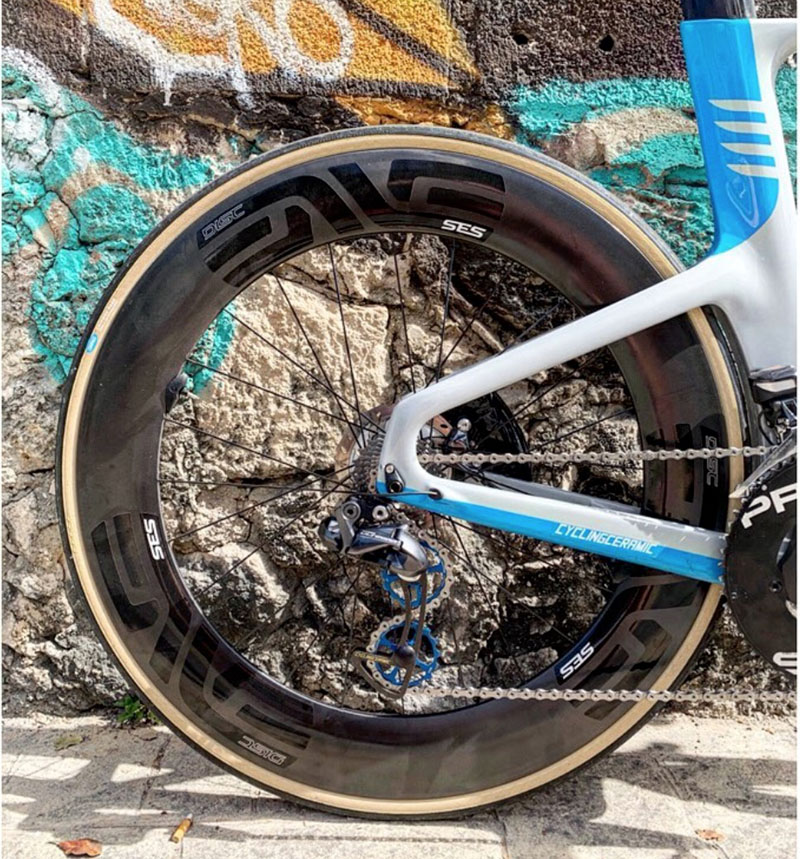
JH: Back in the ’90s, we rode 19 mm tires, and we inflated them until the floor pump couldn’t force in any more air. What do most triathletes ride today?
QKB: Most people now ride 25 mm tires. It used to be 23, but with Enve and Zipp optimizing the aerodynamics of their rims for wider tires, people have switched. They still inflate them to 8 or 10 bars (115/145 psi), though, and they ride really stiff tires, like Continental or Hutchinson. It makes the bike so stiff and doesn’t do any good. All the vibrations are just lost energy.
On my road bike, I ride Rene Herse 32 mm Extralights. I inflate them to 4 bar (58 psi) on the front, 4.2 bar (61 psi) on the rear. I’ve measured the power and speed, and they are as fast as narrower tires, but more comfortable.
My race bike only fits a maximum of 28 mm tires, so I run those. I’d go wider if I could.
The wider, more supple tires at lower pressures have really changed my life. JP from 2-11 Cycles (your French distributor) suggested that I test your tires, and I was immediately convinced.
In Mexico, the road surfaces were quite bad, but I had no back problems, no aches and no pains. We’ve got to ride pretty hard, and riding on supple tires is a sensation that I’ve never had in a race. The tires are so incredibly light, too.
A lot of people tell me that with such lightweight tires, I’ll have flats. But the truth is that I never flat, because the pressures are lower. Like almost all cyclists in Paris, I train on the road around the horse racing track in Longchamps. There’s always glass on the surface, because the horse racing spectators drop bottles, etc. I used to carry two spare tubes, yet I sometimes had to walk home. Since switching to Rene Herse tires, I’ve had only one flat – last week. And that was a slow leak, so I just rode home and changed the tube there.
I never used to ride on the gravel farm tracks in southern France. Now I ride my race bike on gravel trails, and I think “I’ll get a flat; I’ll get a flat.” But I never flat. That is actually quite important in the races. You don’t have support in triathlons, so if you flat, you lose 5-10 minutes, which is huge.
JH: Are there disadvantages to the wide tires?
QKB: On my road bike, when I accelerate, I can feel the tire flex a bit more. I’m not used to that. Also, I can feel it when I descend mountain passes in training. I’m not sure if that is good or bad.
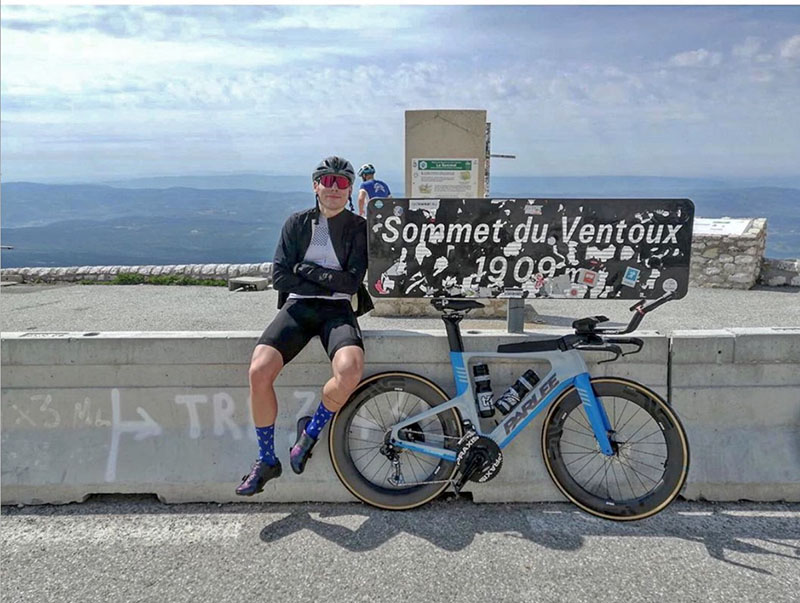
JH: What about the aerodynamics of the wider tires, especially since the rims are designed for 25 mm tires?
QKB: We’ve measured that, and it’s not really significant. Generally, the wheels make a smaller difference than you’d think. I also have trispoke wheels and a disc wheel, but they aren’t significantly more aero, and they ride so harshly. So I never use them.
JH: There is a lot of talk about tubeless tires, even on the road. Why do you use tubes?
QKB: I’ve never tried tubeless. With the sealant in the tire, I figure it can’t be faster, and it probably makes the wheel unbalanced. We already have that problem with our very deep rims. The valve stems are very long, and they cause an imbalance. We balance our wheels like car wheels, but they still vibrate a lot.
I ride latex tubes, and the difference in comfort compared to standard tubes is quite noticeable.
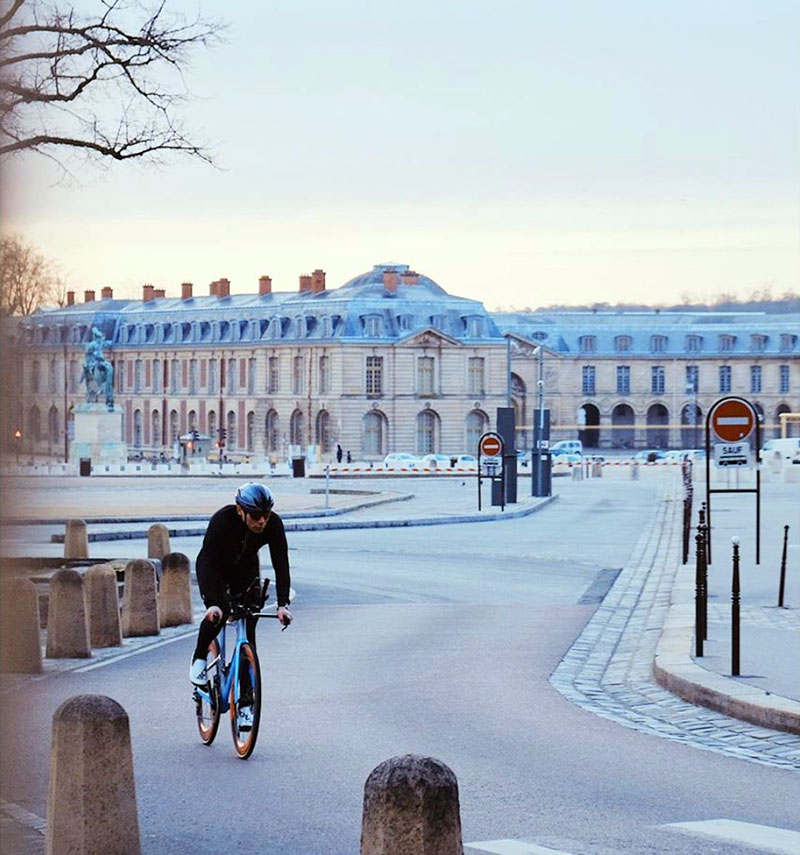
JH: Do you think that your tire choice will remain your secret weapon, or are your competitors catching on?
QKB: All my friends and training partners are switching to Rene Herse tires. Other triathletes also took note, since I am the only one on 28 mm tires and with such lightweight, supple casings.
Otherwise, road racers are conservative. At Longchamps, I often meet 45-year-old road riders. They don’t even race. So I ask them why they are on 23 mm tires inflated to 8 bar (115 psi). They say: “Because I need the speed.” It’s impossible to convince them that they’d be as fast on 32s at half the pressure, and more comfortable, too. Plus they’d have fewer flats.
JH: Let’s talk a bit about triathlons in general. What attracted you to the sport?
QKB: It came a bit by chance. When I was a student, I worked in a bike shop to earn some money. The shop was called Bicycle Store, and it was a very cool shop back when fixies were popular. The owner rode triathlons, and he convinced me to try. I did, and I liked it. That was about 7 years ago. Two years ago, I turned professional. That means I don’t have to work full-time any longer and can focus on my training.
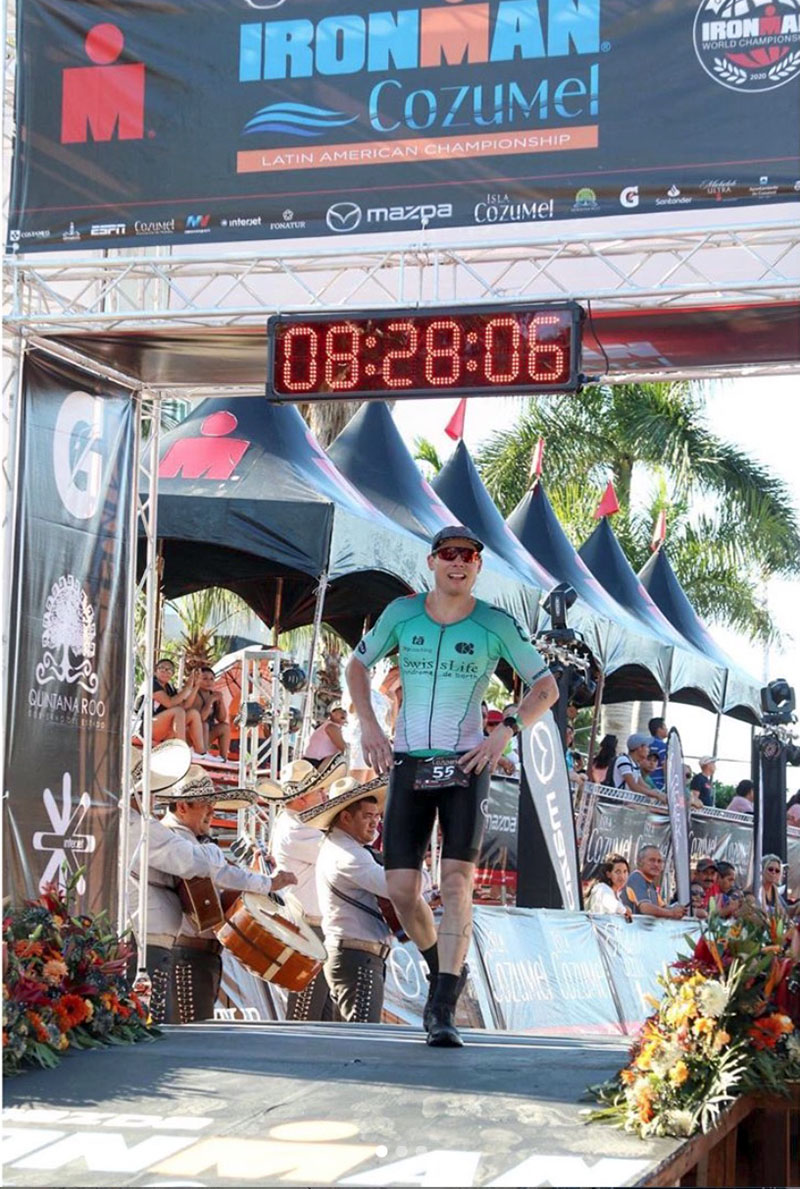
JH: Swimming, cycling, running, those are quite different disciplines. How do you train? When I did triathlons, I always felt that I wasn’t training enough in each discipline…
QKB: You never get bored! When I’m a little tired of one sport, I can do another. You are right, it’s easy to have the feeling you don’t train enough. But it doesn’t take that much training to be competitive. You have to optimize every part. I’m working with the same coach for the last 7 years, and that has been a huge asset. On average, I train 15 hours a week, and even my hardest weeks aren’t more than 30 hours. It’s important that training remains fun and doesn’t become a chore.
JH: How did you decide to turn professional?
QKB: In 2018, I attended the World Championships for the third time in a row. At that point, I realized that I really had to turn pro. That way, I could get sponsors, I didn’t have to work full-time, and I could focus a bit more on training.
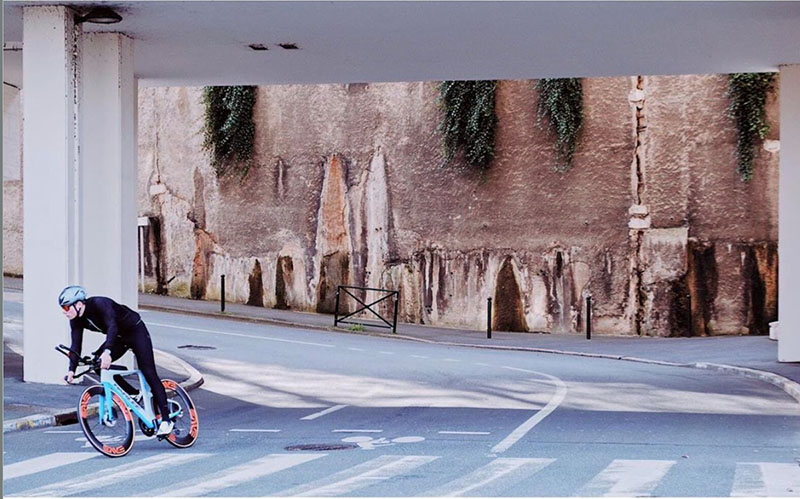
JH: Your ride 180 km after swimming and before running a marathon! I imagine you can’t go all-out, but you have to keep something in reserve for the run. How do you decide how much to energy to expend on each leg of the race? And what about the transitions – is it difficult to change from one sport to another without any rest?
QKB: My strength is on the bike. That is where I do my best to gain on the other competitors. Triathlon is all about science. There isn’t anything just approximate. I look at my computer and keep the power output right at the value that I’ve decided with my coach. Really, my speed on the bike is about how fast I’d ride if I was just riding a 180 km time trial.
The transitions are difficult. In swimming, you are horizontal, and the human body isn’t designed for that, so the heart rate coming out of the water is quite high. In the transition, it’s all about not losing time, so you can leave with the lead group and don’t have to ride alone. So we’ve got our shoes already attached to the pedals, etc. Then, on the bike, we try to get our heart rate down, but the pros also start the bike leg very fast. It’s a mix between conserving power and being fast.
The run is my weak point, but modern triathlon bikes are designed so you don’t use the same muscles on the bike as during the run. That way, your cardiovascular system may be getting tired, but your leg muscles remain fresh.
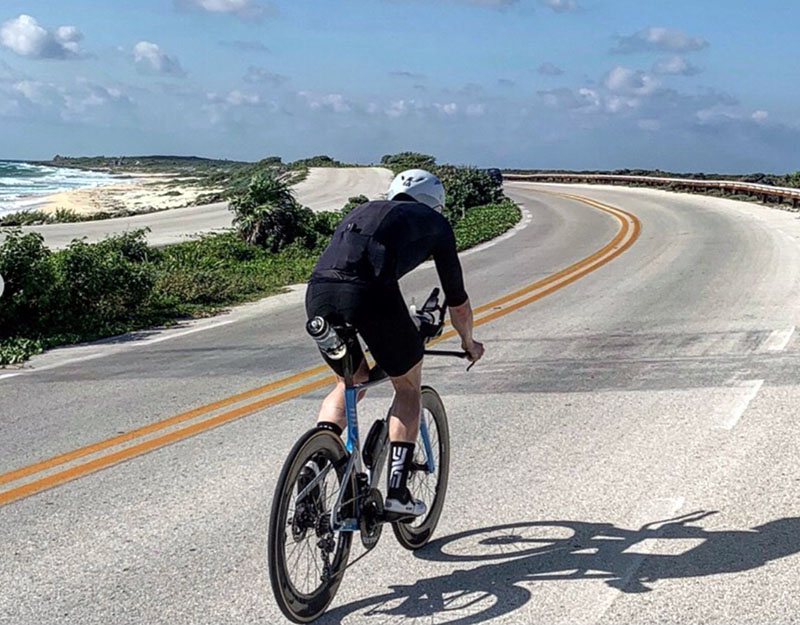
JH: Cozumel is a famous tourist destination. How was it to race on an island in the Caribbean? I imagine palm trees and turquoise water…
QKB: I love traveling. During my childhood, my family lived in Africa, and traveling has always been part of my life. So I really enjoy traveling to places to race. But during the race, I just think about the race.
JH: If some of our readers are interested in triathlons, how do you recommend they get started?
QKB: You should start slowly. Don’t set big goals. Start with small triathlons and see whether you like it. Don’t train too much, but just enough that it’s fun. It’s important to enjoy the sport, otherwise it won’t last.
Even as a pro, when I don’t enjoy it, I take a rest. It’s sometimes hard to keep the notion of fun in high-level sports. Sometimes, I have to do all-out efforts, and they are incredibly hard. But for me, being at the very max of what I can do gives me enormous satisfaction. I also know I’ll never be world champion, but I’ll always compete in triathlons. I have a balance in my life between my job, my family, travel and my sport. That’s very important for me
JH: Thank you, Quentin! We look forward to following you in the future, and we wish you luck and much fun in your races and on your rides!


